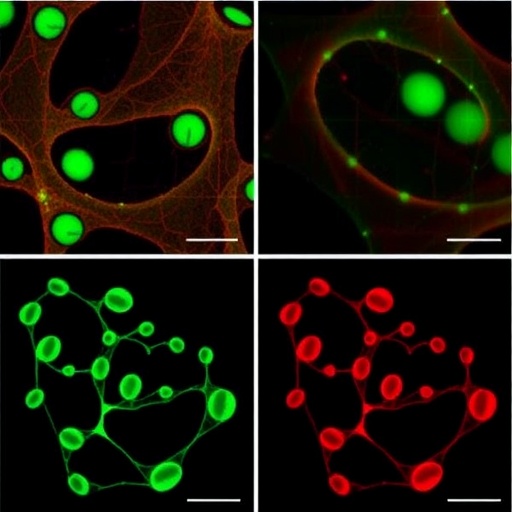The development, manufacture and sale of pharmaceutical drugs in the United States is a complex landscape involving intellectual property and strict federal regulations.
But according to Colorado State University scientists, the status quo of the U.S. pharmaceutical market may soon be turned on its head. That's due in part to a growing community of do-it-yourself "biohackers" who are disrupting business-as-usual for pharmaceutical discovery, development and distribution.
A Sept. 13 perspective piece in Trends in Biotechnology frames these emerging issues, and predicts how the pharmaceutical industry, and the U.S. regulatory environment, will need to change in response. The paper's authors are Jean Peccoud, the Abell Chair in Synthetic Biology in the Department of Chemical and Biological Engineering; Jenna Gallegos, a postdoctoral researcher in the Department of Chemical and Biological Engineering; and collaborators from Bio-Link Australia, Woodrow Wilson International Center for Scholars and Boston University School of Public Health. Peccoud is also a faculty member in the School of Biomedical Engineering at CSU.
As the prices of many medicines continue to rise, new models of funding, research and drug development have emerged as part of what the authors call a "novel innovation ecosystem." Most notably, this ecosystem involves drug manufacturing at smaller, more personalized scales.
"Key drugs are still too expensive," Peccoud said. "People don't have access to them, so what if they can make it themselves? What do we do about that?"
The authors use the California-based Open Insulin Project as a case study of how the DIY bio movement might shape the future of medicine. Founded in 2015, the project's creators are trying to increase competition in the insulin market by developing and releasing an open-source protocol for manufacturing off-patent insulin.
Why does the Open Insulin Project exist in the first place? Insulin is 100 years old, but it remains prohibitively expensive for many patients, with some uninsured patients paying up to $400 a month for this life-saving medicine. People are angry, and in some cases, people are dying, from lack of access to affordable insulin.
The U.S. regulatory system today favors existing manufacturers of biologic drugs like insulin. Biologics are drugs made from a living organism, as opposed to small-molecule drugs, such as aspirin, which are synthesized chemically. When making off-patent small-molecule drugs, a competing company need only demonstrate that they've made pure aspirin. But biologic drugs are more difficult to control for quality; thus competing companies have to do expensive human clinical trials – not worth the $250 million price tag, if they can't even file for a patent to recoup their investments.
While the structure of human insulin is no longer patent protected, the handful of large companies that produce insulin continue to market "insulin analogues" that are supposedly improved varieties of plain insulin. The authors note that the medical benefits of these new versions of insulin are debatable.
That's where the biohackers come in. If the Open Insulin Project succeeds in developing a protocol for "home-brewed" insulin, they'll need to avoid violating patent-protected methods of manufacturing insulin. But biohackers making insulin for their own, personal use wouldn't need to worry about patent infringement - although safety considerations are certainly at play.
"It would be prudent for regulators to engage patients and innovators in community bio-labs to design adaptive oversight that fosters an ethos of responsibility," the authors say.
The real challenge for Open Insulin Project biohackers, should they want to enable competing pharmaceutical companies to sell off-patent insulin, will be regulation, the authors say. The success of the project will be severely limited by the cost of regulatory approvals, which include proving biological consistency, safety and possibly efficacy.
If such new models of insulin production are to succeed, they will depend on alternative approval processes, the authors say. If biosimilarity of biohacked insulin could be confirmed without clinical trials, the cost of development would dramatically decrease. This could be achieved through smaller-scale, decentralized manufacturing. And the technology already exists; microbioreactors that are capable of producing smaller doses of biologics have been developed in university labs.
"In short, the status quo has got to change," Gallegos said. "We can't address the issues if we don't acknowledge them."
###
Media Contact
Anne Manning
[email protected]
970-491-7099
@ColoStateNews




